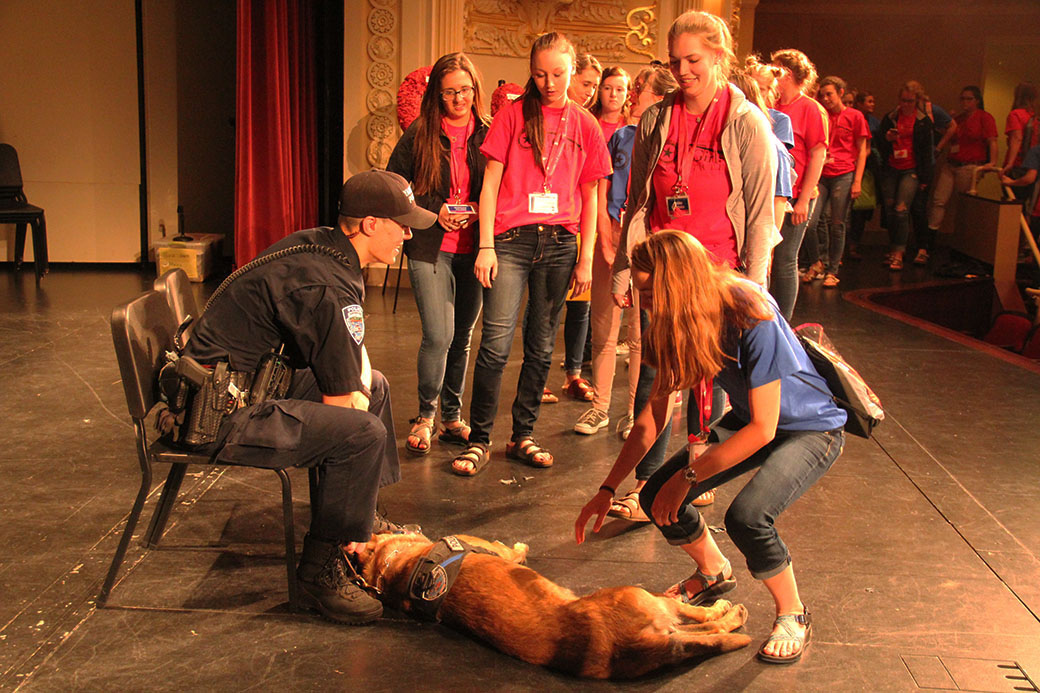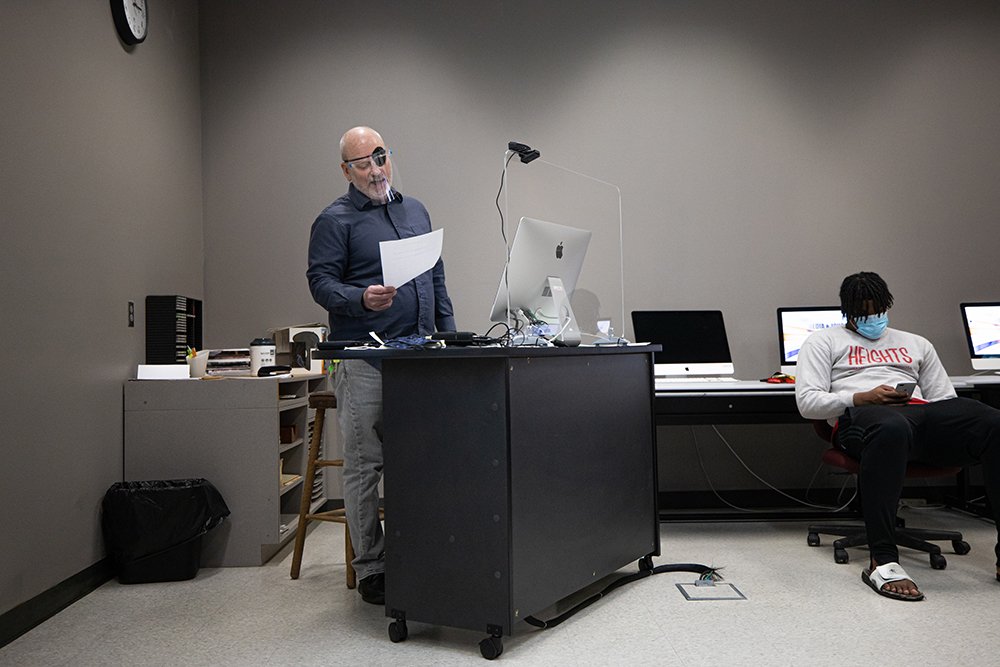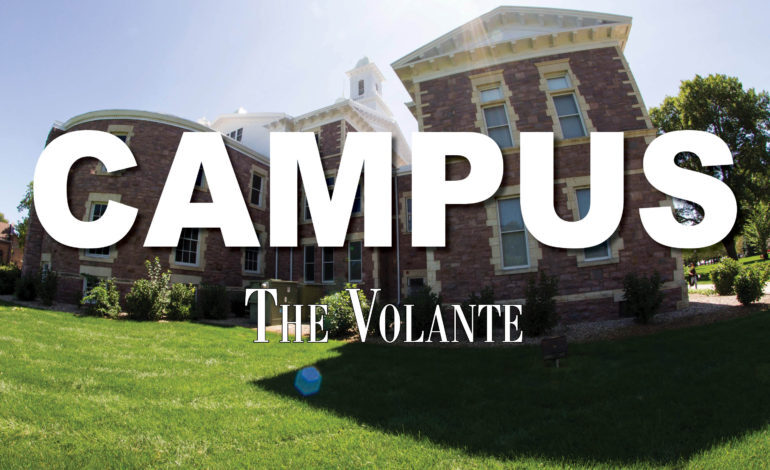
Canines help inform delegates about narcotic detection, K-9 units
By Chrystina Anderson
When canine Reno took to the stage in Aalfs Auditorium Slage Hall Thursday morning, the Girls State audience couldn’t help but “awe.”
Reno is a normal, happy and fun dog, said his handler Kyler Pekarek. He and Reno often play together when at home.
But during the day, Reno works in the streets of Yankton, S.D., assisting his handler by detecting drugs.
Pekarek and Reno led a demonstration for Girls State delegates, informing them about the training and job of dogs used in police department K-9 units, which includes narcotic detection, apprehension, tracking, building searches and evidence recovery.
Reno is a Belgian Malinois and was purchased for about $9,ooo. He was born at the Kasseburg Canine Training Center in New Market, Ala., where the Yankton Police Department purchased him.
Girls State Senior Counselor and Highway Patrol Officer Deanna Johnson also owns a K-9 partner. She also led the demonstration Thursday afternoon. Her dog, Dina, was purchased from Holland for $8,900.
During a normal drug bust, there are not too many dangers, Pekarek said, but the biggest danger is the unknown element about potential outcomes during the situation. He also said weather can harm drug dog, such as overheating, which does add an element of risk during such cases.
One technique used to train Reno involved hiding a toy that smelled like a specific drugs and having him track the toy.
Rebecca Loehrer, Chicago, was surprised to find out how they made the toys smell like the drugs. The process involves putting the toy in a box of contained drugs, then letting the toy absorb the smell.
Delegates were also surprised to learn that K-9 handlers can purchase their dogs from the Yankton Police Department once the dogs retire for only $1.
Danielle Luettel, Detriot, was also surprised to learn how much work goes into a K-9 unit.
“Canine dogs are very important and require a lot of training,” Luettel said.
Previous canines at the Yankton police department have participated in both 11- and eight-week training programs, according to the City of Yankton’s website. Handlers must also pass a written test and then constantly train their canine partners daily and travel to Sioux Falls on a regular basis, even after they pass the tests.
Yankton began its K-9 unit in February of 2002 when the department purchased two untrained Belgian Malinois, Karak and Rex. After Karak retired, handlers found a Dutch Shepherd named Greif.
After Rex died unexpectedly, handlers then went to the Kasseburg Canine Training Center in New Market, Ala., and purchased a Belgian Malinois/German Shepherd named Ares. When Ares retired, handlers purchased one of their current K-9 partners, Max, who is also a Belgian Malinois.
While Max is trained in narcotics detection and apprehension, Reno is a dual-purpose partner.
When Pekarek joined the force in March 2016, the officers in the K-9 Unit went on yet another search to find Pekarek the perfect partner.
The most challenging part about having a dog for a partner is that Reno has a mind of his own and does what he wants, Pekarek said.
Pekarek said he also takes Reno outside multiple times a day to work off his energy, but he still left over energy no matter how long or how much they are on the move.
“Reno is a highly social and energetic dog,” Pekarek said.



